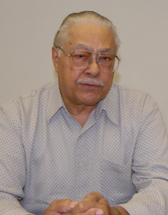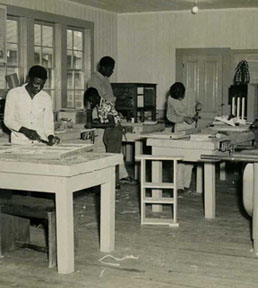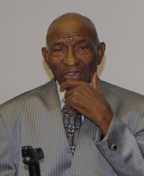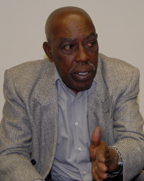

Curricular Experimentation:
“The task of the Secondary School Study was to find means by which the curricular offerings of black high schools could be influenced by accepted educational practices that had enriched other school curricula but which were practically unknown in most black schools.” W. H. Brown & W. A. Robinson, Serving Negro Schools: A Report on the Secondary School Study (1946) |
||||||||||||||||||||||||||
“The school was so special because of the connection that the teachers had with the children. There was a special feeling; we knew that we were cared for and were important. The teachers saw what needed to be drawn out of each student. We didn’t see it. But they knew.” |
||||||||||||||||||||||||||
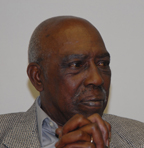 |
||||||||||||||||||||||||||
“Cooperation” became emblematic for the entire effort as faculty within the member schools were placed together in settings where they could begin to formulate purposes and plans for educational change. Furthering the Progressive Education Association’s belief in “democracy as a way of life,” cooperative-planning became a tangible practice that served to build community and foster democracy. Secondary School Study participants believed “that better education meant broader opportunities for intelligent participation in and responsibility for democratic living.” As John Dewey had asserted, “Democracy must be reborn with each generation, and education is its midwife.” |
||||||||||||||||||||||||||
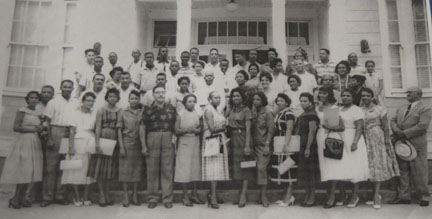 |
||||||||||||||||||||||||||
CORE CURRICULUM One dimension of curricular planning that permeated the Study was the effort to correlate the traditional subjects into a core curriculum, i.e., to draw out connections among the individual subjects as they were taught in their respective classes. The content was decided through a combination of teacher-pupil planning and teachers’ analysis of students’ needs and interests. While the “project method,” a common progressive education instructional practice of the time, was employed in many classrooms, the curriculum still remained focused upon academic knowledge. |
||||||||||||||||||||||||||
In the “Report of Two Years of Activity of the Secondary School Study,” appearing in the 1943 Journal of Negro Education , Natchitoches Parish Training School was specifically mentioned by W. H. Brown, then the assistant director of the study, as one of six schools exploring the reconfiguration of “the various subject areas by means of some type of core program.” This is where some of the more interesting curriculum development took place as distinctions between academic and vocational education were softened. In accord with John Dewey, vocational education became quite academic and served all youth, regardless of their career plans. Arthur Welch remembers |
||||||||||||||||||||||||||
|
||||||||||||||||||||||||||
The historical mission of black education at the secondary school level is often described as the tension between a college preparatory course of study and a more occupational-vocational curriculum, a false dichotomy established by the emblematic beliefs of W. E. B. Du Bois and Booker T. Washington. Participating Secondary School Study schools often configured their curricula to bring together all students and to permit the core courses to serve as an occasion to define community. Specialized courses allowed students to pursue specific academic and vocational interests, yet the core courses brought all the students together in homogenous groupings. |
|
|||||||||||||||||||||||||
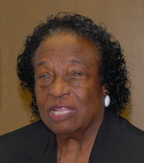 |
||||||||||||||||||||||||||
“The elementary school was part of the school community, too. They paved the way for success in our high school classes. Many of our teachers had college degrees. This was rare in a small town like this. And so many of our students went to college. Natchitoches Parish Training School was a special place, and I still hold it so dear.” Marcella Walter |
||||||||||||||||||||||||||
SOCIAL GROWTH “Teachers are not only helping children to meet their academic needs in a more realistic way, but are also actively concerned with the personal problems and with the social growth of children. Some examples of this kind of concern will be found in practically all of the schools, but unusually convincing examples are evident in . . . . Natchitoches Parish Training School.” W. H. Brown, “Report of Two Years of Activity of the Secondary School Study,” The Journal of Negro Education (Winter, 1943). |
||||||||||||||||||||||||||
|
“We were being taught how to relate to our parents and to the community. The teachers were helping us establish a relation with our parents who were sacrificing for us to go to school. We all worked together. Each day the teachers were helping us learn not only knowledge but also to learn about life.” LeRoy Wafter |
|||||||||||||||||||||||||
“We had so many dedicated teachers, and they taught us not just the rudiments of our schoolwork but also how to live in the community and how to be citizens. What I learned in high school carried me through my later years.” |
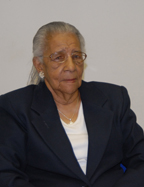 |
|||||||||||||||||||||||||
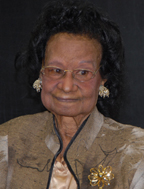 |
||||||||||||||||||||||||||
“[as a career educator who worked for 39 years] all that I have been doing, my inspiration, came from the teachers who taught me at the Natchitoches Parish Training School. They first taught us the basics and then taught us character. Education was not just what was in the book but also values and beliefs to live by.” Dorothy J. Presley |
||||||||||||||||||||||||||
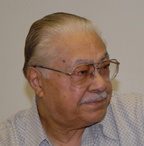 |
“Only after finishing my military tour of duty and starting college did I realize that my high school teachers were concerned about my well-being as well as my education. That I didn’t see until I got out in the “real world.” When I reflect back on my years at Natchitoches Parish Training School, there were many caring people.” Arthur Welch |
|||||||||||||||||||||||||
|
“Natchitoches Parish Training School teachers didn’t just teach - - - they prepared us for life. This was not just learning skills but acquiring knowledge of how to learn so that we could do any task. Those were our teachers.” Rev. J. D. Dupree |
|||||||||||||||||||||||||

an institutional member of the International Coalition of Sites of Conscience
Museumofed@gmail.com

